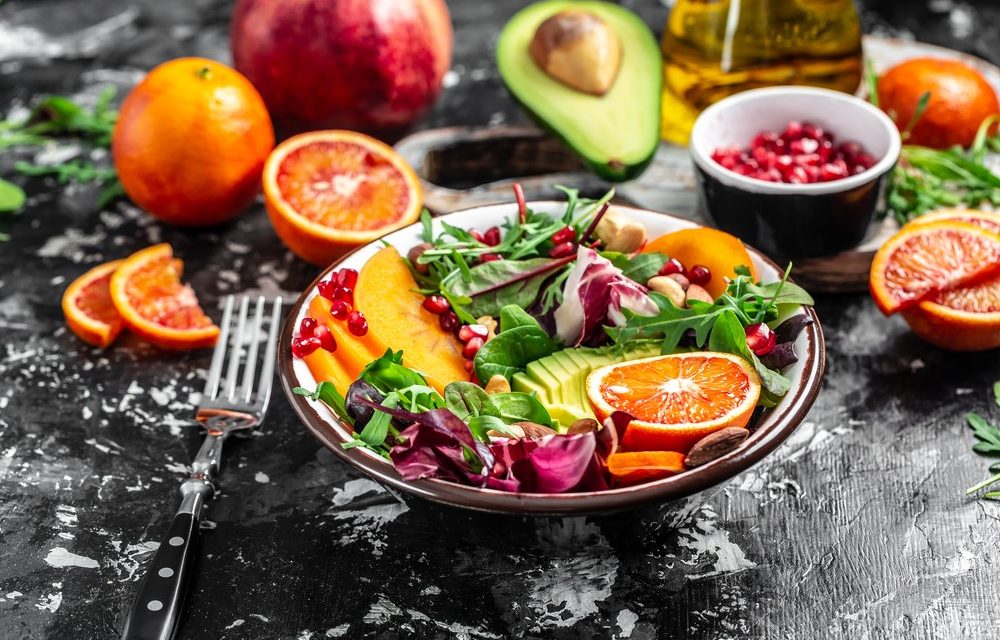This is the first in a series of articles about current culinary trends that the Washington Hospitality Association will release during the first quarter of 2022. The series focuses on dishes, drinks and diets projected to become more (or less) popular this year. We’ll also look at some of the operational changes that are shaking up the industry. Our data comes from sources like the National Restaurant Association, the American Culinary Federation and national polling groups. Let’s dig in.
Culinary trends part 1: Health food
Out with the new, in with the old
After reading polls, checking the charts, and scouring the message boards, three health-centric culinary trends stand out as likely to influence dining habits in 2022:
1) Mediterranean diets
2) Plant-based foods
3) Immunity-boosting and functional foods
All three trends share a common feature in their lack of meat and “back to basics” roots, but their devotees and the forces contributing to their success both differ.
All plant everything
While the term plant-based is broad and could literally apply to a salad, that is not what most people think of when they hear the term. Due to the popularity and marketing of products like meat replacements and protein supplements, the term plant-based food often refers to a product made of plants that usually contains meat. The plant-based trend is fascinating because it bucks the natural connotation of the other two trends. After all, a hamburger made mostly of soy protein concentrate like the Impossible Burger hardly sounds natural. But that unnatural composition could be the special sauce that has allowed the sector to grow at a rapid rate and manufacture a product that is suddenly in high demand.
The rise of plant-based food may have coincided with the pandemic, but unlike many other trends in 2020, it was not created by it. The search term “plant based” started gaining steam on Google in January 2019, and climbed upward throughout the year, with help from events like the Beyond Meat IPO. The plant-based food tech company wasn’t the first meat-free burger featured on menus worldwide (remember BOCA?) but their timing was impeccable. In January of 2020, seven months after Beyond Meat became the first vegan meat alternative to list on the New York Stock Exchange, keyword searches for “plant based” hit an all-time high and they’re still trending up.
For many, the rise of plant-based foods might seem predictable, even trivial. After all, vegan and vegetarian diets are as common as ever. And plants don’t contain animals, so people must be eating more plants, right? And what makes the plant-based Beyond Burger superior to the soybean-based BOCA burger, or even the veggie burger that rose to popularity after the groundbreaking release of the VegeBurger in 1982? Is the plant-based distinction in fact itself, a nothingburger? There’s no short answer.
The winds of change
Although it seems like a given, the concept of changing your daily diet to improve your health is modern. In America, the concept of dieting is barely a hundred years old and can be traced back to 1918 when California doctor Lulu Hunt Peters wrote a book called Diet and Health with Key to the Calories. For the next 80 years or so, Americans followed diet plans with similar goals. Whether it was Martinis and whip cream, Atkins or South Beach, they were built and marketed solely to help you lose weight. This brief history of dieting is relevant to our topic of culinary trends in 2022 only because dietary norms have shifted over the last 15 years and inform the trends we see today.
Ethics have influenced what Americans eat for a long time and vegetarian diets are hardly new or radical, but they are increasingly common. Specifically, the number of vegans is growing as more people, many of them converts from vegetarianism, join the roughly 9
million American vegans. This national meat exodus led The Economist to declare 2019 the year of the vegan. The timing was perfect for the plant-based revolution.
We will talk more about the ethics behind sustainable and local food in our next article, but it’s important to mention now because the food ethics stars aligned for manufactured, plant-based foods. Ethical food habits led consumers to buy organic, fair-trade, locally sourced products for the last two decades, all of which are mostly natural products. Significantly, ethics led many to form negative opinions on foods produced with the use of Genetically Modified Organisms (GMO). This desire for natural foods was compounded by a growing mistrust of processed foods. Somehow, this is the climate in which a mass-produced fake burger took the world by storm.
The plant-based burgers are good examples because they seemed to rise out of obscurity and into Burger King in a matter of months, but the table was set for every variety of plant-based food. While many were getting used to the idea of doing all their shopping at the local farmer’s market, many of America’s 9 million vegans in 2020 were becoming accustomed to vegan pork chops, burgers and steaks at one of the nation’s 1,474 plant-based restaurants. For passionate believers in a vegan diet, an unnatural appearance or obscure ingredients play second fiddle to the reality that the meal was produced without harming animals. Similarly, the gluten-free community had started to accept some strange sounding ingredients which bled into popular culture and aided the plant-based trend through products like cauliflower pizza crust. Perhaps most importantly, people increasingly started to recognize the connection between meat and climate change. What started out as obscure science highlighted in productions like 2014’s Cowspiracy had become common knowledge by 2020 and a higher priority for climate change activists and environmental advocates who started to recognize America’s large population of cows as a significant carbon producer.
For many dedicated environmentalists and vegans, a cow-free burger that is good enough to convert their relatives or loved ones is a game-changer no matter what else is in it. This dynamic helped overpower the all-natural, organic trend without destroying either one. Think of the three health trends highlighted for 2022 as a three-sided Venn diagram. While a person adhering to the Mediterranean diet could be vegetarian for both ethical and health reasons, there could also be other motives at play. Meanwhile, a plant-based devotee might be more likely to make their decision on ethical grounds and the fan of antioxidants might be purely health-conscious. Of course, they could all share reasons, but assuming that the motives behind someone’s diet are simply the effects of a larger trend will cause you to miss opportunities to cater to a larger, more permanent community.
It might not be ‘just a fad’
So, what is the takeaway from all this? Look past the trend, look at the people. The way restaurants reacted to the growing demand for gluten-free foods serves as a good example. While some dismissed it as a trend, others embraced the celiac community, took additional safety precautions and spent time creating truly special gluten-free dishes. Those establishments were often rewarded with loyal lifelong customers. As you are reading through our culinary trends series remember to ask what led to this point. If you can figure out why people are following a trend and use that understanding to craft your menu or brand, you can become the trendsetter.
Coming soon…
[accordion][acc title=”Part 2: Sustainability “]Part 2: Sustainability
This article will feature an outline of current sustainability trends affecting restaurants like single-use utensils, plastics and tips on moving toward zero waste. [/acc][/accordion]
[accordion][acc title=”Part 3: Meeting the demand for delivery”] Part 3: Meeting the demand for delivery
This article will feature innovations and stories from operators that successfully adapted to meet delivery demand using methods like new packaging and employee training [/acc][/accordion]
[accordion][acc title=”Part 4: Menu Streamlining“]
Part 4: Menu streamlining This article will share ways that other operators have streamlined their menus.[/acc][/accordion]
[accordion][acc title=”Part 5: Drink trends”] Part 5: Drink trends This article will explore some of the beverages that are expected to be popular in 2022 like spiced cocktails, hard seltzer and nut milks. [/acc]
[acc title=”Part 6: Food trends”]Part 6: Food trends This article will explore some of the foods we expect to be popular in 2022 including ramen kits, upscale potato chips and CBD or hemp infused foods. [/acc][/accordion]



















![Webinar replay! [Ask a Lawyer] Best hiring practices](https://wahospitality.org/wp-content/uploads/2024/05/CatherineHiring-webinar-150x150.png)









